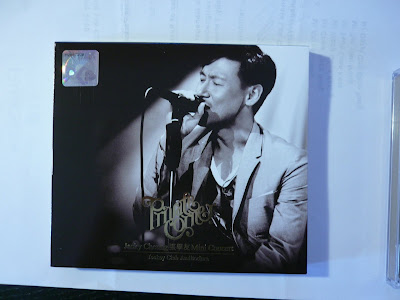Some will obviously say that the proposed amendments are reactionary to the more recent shenanigans in the markets. I am all for better transparency by listed firms, but we have to draw a line between credible information and over-regulation. Things can get petty and paper work can become too onerous and may even fail to achieve the objectives of better transparency.  Changes in directors, CEOs and CFOs - This is OK and acceptable.Changes in external auditors and independent advisers - This is OK but may need to be extended to include an opinion from the external auditors and independent advisers as to why they were changed or asked to resign or were themselves voluntarily withdrawing from the positions.Pledging of shares by controlling shareholders - Very good move, and it should include shares pledged to investment houses outside of the country.Grounds for selection of independent directors / why a director is independent - This is total bullshit and asinine. Waste of time.Improvements in clarity and analysis of quarterly reports - Good move but make it standardised so companies do not have to guess.Annual reports to have 5 year financial highlights - Many listed firms already doing this. Good move nonetheless.Deviation in utilisation of proceeds - Yes but should have a materiality clause as well.Announcement or termination of corporate proposals and impact - Yes.Immediacy in results of AGM/EGM - Yes for sure because business reporters can no longer cover the many AGMs or EGMs effectively, there are too many of them. This is important.
Changes in directors, CEOs and CFOs - This is OK and acceptable.Changes in external auditors and independent advisers - This is OK but may need to be extended to include an opinion from the external auditors and independent advisers as to why they were changed or asked to resign or were themselves voluntarily withdrawing from the positions.Pledging of shares by controlling shareholders - Very good move, and it should include shares pledged to investment houses outside of the country.Grounds for selection of independent directors / why a director is independent - This is total bullshit and asinine. Waste of time.Improvements in clarity and analysis of quarterly reports - Good move but make it standardised so companies do not have to guess.Annual reports to have 5 year financial highlights - Many listed firms already doing this. Good move nonetheless.Deviation in utilisation of proceeds - Yes but should have a materiality clause as well.Announcement or termination of corporate proposals and impact - Yes.Immediacy in results of AGM/EGM - Yes for sure because business reporters can no longer cover the many AGMs or EGMs effectively, there are too many of them. This is important.
---------------------
Star Biz KUALA LUMPUR: Proposed amendments to Bursa Malaysia’s listing requirements and the introduction of the Corporate Disclosure Guide (CD Guide) are set to prod listed companies into revealing more details about key developments, including changes of directors, chief executive officers (CEOs), chief financial officers (CFOs), external auditors and independent advisers.
The revamp also covers disclosure rules for quarterly and annual reports, pledging of shares by controlling shareholders, termination of corporate proposals and voting results of shareholder meetings (see table). Some of these proposed improvements are seen as possible remedies to recent cases of poor corporate governance and stinginess with information.
In a media release yesterday, Bursa Malaysia said the CD Guide and the suggested changes to the listing requirements were aimed at promoting further transparency, quality and efficiency of the Malaysian capital market.
Said chief regulatory officer Selvarany Rasiah: “The proposed amendments are part of the exchange’s ongoing efforts to enhance the regulatory framework for listed issuers to ensure the competitiveness and attractiveness of Bursa Malaysia as a listing and investment destination.
“Maintenance of market integrity remains our key focus in formulating the proposed amendments, and in so doing, we strive to strike a careful balance between enhancing market regulation and promoting business efficacy.”
To come up with the proposals, the exchange took into account industry feedback, findings and observations from supervision and monitoring activities, stakeholder engagement, and international standards.
In a move to improve the quality of the stewardship of listed companies, the stock exchange plans to make it mandatory for a listed company to give its grounds for appointing a director or for nominating him for election.
“This includes the reasons why the listed issuer is of the view that the director has the character, experience, integrity, competence and time to effectively discharge his role as a director of the listed issuer.
In the case of an appointment of an independent director, we propose the listed issuer also sets out the reasons why the listed issuer considers the independent director as being ‘independent’,” says Bursa Malaysia in a consultation paper issued yesterday, which sets out the proposed amendments to the listing requirements.
A second consultation paper, also released yesterday, invites public feedback on the draft CG Guide. Bursa Malaysia said this consultation paper was meant to clarify the disclosure requirements set out in the listing requirement and to illustrate how the disclosure requirements should be applied. It also set out best practices for establishing policies and procedures to enable listed issuers to fulfil their disclosure obligations.

“The proposed CD Guide seeks to provide greater clarity and guidance to help listed issuers in better understanding and complying with their disclosure obligations under the listing requirements,” said Selvarany in the media release.
In addition, if the new disclosure rules are implemented, the companies will have to provide extra information in their quarterly and annual reports so as to enable investors to better understand the companies’ financial performance.
One proposal is to replace the performance reviews in the notes to quarterly reports with detailed analyses that set out material factors affecting the companies’ earnings and revenue. The idea is to eliminate cookie-cutter reviews that state the obvious. Bursa Malaysia has also proposed that the listing requirements prescribe certain items that ought to be incorporated in the income and cash flow statements in the quarterly reports.
Another interesting proposal is the requirement that the listed companies disclose the reasons for the resignation or change of directors, CEOs, CFOs, external auditors and independent advisers. This is partly to enable the detection of red flags, if any.
“Such disclosure would be particularly pertinent in instances where it arises from irregularities taking place in the listed issuer,” said Bursa Malaysia in the consultation paper on the proposed amendments to its listing requirements.
The deadline for submitting written comments on the two consultation papers, which can be downloaded from Bursa Malaysia’s website, is Aug 19.
“We expect diverse views on the consultation papers,” Selvarany told StarBiz. “We keep a very open mind. We want all constructive feedback. There may be some issues that we have not considered and we are prepared to take on board the relevant comments.”

























































